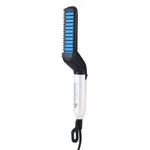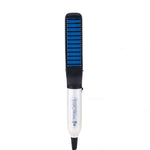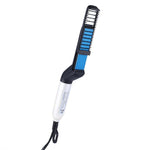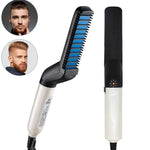
Got beard itch? We have the antidote!
Beards come in all shapes and sizes and each represents its own type of character, style, and elegance. A beard defines you and your presentation to the world. Whether its lifestyle, trying a new look, or you've stopped shaving for Movember; if you have facial hair you’ve likely discovered that the regal beard has a dark side. What you learned is likely the number one cause of beard murder globally. What you’ve realized is that with great beard come great itch!
We know this because growing a beard is synonymous with developing an itch. BUT WAIT! Before you run off and grab a razor, we’re here to tell you that there is an antidote that will help you live itch-free and look great at the same time!
Before handing over the antidote, we initially must establish what is causing the itch in the first place. One common misperception is that beard hair is just like any other body hair and can be treated equally. News flash, it's not! Growth of beard hair is mainly driven by testosterone, hence why it predominately grows on the more testosterone-producing gender and it is referred to as androgenic hair. Additionally, your face is not the same as your scalp, keeping it simple, different glands, oils, and thickness. Understanding these differences is the first step in eliminating the beard itch.
Causes of the Itch:
There are many unique or genetic circumstances that can cause your face to itch, for the purpose of this post, however, we are only going to discuss the two most common causes affecting beards. Each cause is directly related to its relative stage of beard growth and newbies or casual beard growers could start noticing beard itch as soon as they stop shaving, while full-bearded brethren could suffer long after.
New Beard:
If you are just starting a beard it is important to acknowledge the process and changes your hair and skin are undergoing. Routine shaving has made your skin accustom to a hair-free environment. The process of shaving itself cuts the hair leaving a sharp edge, which with a close shave, sinks into the hair cavity known as the follicle. Continuous shaving repeats this without irritation and itch goes unnoticed until, that is, you stop shaving. As the new, sharp-edged hair begins to grow, it irritates the follicle resulting in a mild to unbearable itch! Note: if bumps or redness (not related to scratching) are observed, this could be a sign of something different and a dermatologist should help you identify the cause.

Established Beard:
Once you are into week 2 of growth or have an established beard and noticing an itch, there are a few things going on. Your beard hairs have been accumulating oils and dirt and if you are using standard soaps or shampoos not designed for beards (androgenic hair) to cleanes, you are also removing the natural face oils in the process. This leaves your skin and hair dry, which ultimately leads to the itch. Dry skin, if not addressed will scale, crack and start harboring nastiness. Subsequently, if you are not conditioning your beard hair, not only is that a recipe for an unhealthy beard, but the hairs become rough and start to rub on the dry skin, exacerbating the itch to intolerable levels!

The Antidote:
What have we learned so far? Beard hair, also known as androgenic hair, is different from head hair, as is the face and scalp. Causes of itch are relative to different stages of growth. Washing with cleansers not designed for the beard further inflames the situation. Let us now discuss the steps to a healthy beard routine that will be sure to keep your face and beard feeling and looking great!
Step 1:
Brush your face! I mean it; get yourself a good soft bristle beard brush and get cracking. Brushing your face doesn't only stimulate your face and follicles it also helps you shed dead hair and skin promoting healthy, luscious growth. Furthermore, it's a significant step in training your beard to grow into the desired style.
Step 2:
Wash your beard! Good hygiene is important, but the right good hygiene is the requirement. It's never to early to seek out a wash that is formulated for beards. In fact, you'd want to do this at the thought of growing a beard so that you have it on hand when you stop shaving. Look for ingredients like argan oil, avocado oil, coconut oil, Vitamin E, and Vitamin D as these will be gentle on your skin, nourish your skin and hair and leave your face and beard feeling healthy and soft.
Step 3:
Condition your beard! Seek out a conditioner formulated for your beard. This will be gentle on your face while keeping your beard hair conditioned and healthy.
Step 4:
Essential to every healthy beard routine is the proper beard oil, balm, and/or cream. Think of these as the leave-in conditioner for your beard. They each help heal your skin and hair by replenishing oils and locking in moisture. This improves both the condition of your skin and promotes healthy beard growth. Click to read more about when to use products.
Step 5:
Maintain a healthy lifestyle! What you eat impacts more than just your gut. Incorporate foods rich in Vitamin D, Beta-Carotene, and Biotin; all vital building blocks for healthy skin and hair.

We hope this post shed some light on causes and cures for the dreaded beard itch. Remember, the right hygiene, early, along with an ongoing healthy routine is the antidote to an itch-free beard. We'd love to hear what's worked for you! What stage of beard you are in? Why you've decided to join the bearded brotherhood?























Leave a comment